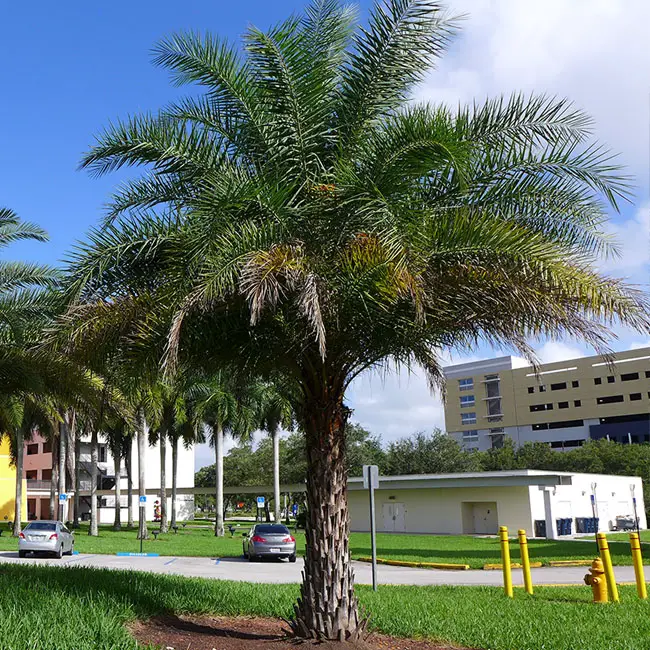
The Sylvester Date Palm Tree, scientifically named Phoenix sylvestris, ranks among the most popular palm trees worldwide. Its spectacular appearance makes it a common choice for luxury homes, renowned golf courses, and avenue plantings.
It is native to the Indian subcontinent, particularly regions of northern India, Bangladesh, and Pakistan. It is also commonly found in various parts of Southeast Asia.
This palm species is not native to any other continents and has been cultivated and introduced to other regions for its ornamental and horticultural value.
The Sylvester Date Palm Tree is versatile, as it can thrive both outdoors and indoors, making it suitable for cultivation in states such as Alabama, Arizona, Arkansas, California, Georgia, Louisiana, Mississippi, Nevada, Oregon, and Texas.
Quick Facts:
| Scientific name: | Phoenix sylvestris |
| Common names: | Sylvester Date Palm, Sugar Date Palm, India Date Palm, Silver Date Palm, Wild Date Palm, Toddy Palm. |
| Origin: | Native to India. |
| Growth Rate: | Slow. Up to 40 ft tall and 10-15 ft wide. |
| Cold Tolerance: | USDA Zones 8b (15 to 20 F) to 11 (above 40 F). |
| Light Req: | Full sun. |
| Water Req: | Moderate. |
| Soil Req: | Widely adaptable. |
| Fruit: | Yes. Orange- yellow. Red. Not edible. |
| Propagation: | By seeds, germinating in 2-3 months. |
Identifying Characteristics of the Sylvester Date Palm
This palm shares several characteristics with the True Date Palm (Phoenix dactylifera). It features a robust solitary trunk with a captivating diamond pattern created by leaf scars.
To maintain its elegance, the Sylvester Date Palm requires periodic trimming to remove old dead leaves that tend to form a “skirt.” The trunk has a distinctive swollen base, measuring approximately 13-18 inches in diameter.
At the top of the trunk, without a crownshaft, emerge 90-100 large pinnate, feather-shaped leaves. These leaves are approximately 10-15 feet long, boasting a silver or blue-green hue and a slight curvature.
They are adorned with 100-120 sharply pointed leaflets at their ends. These leaflets measure 1-1.5 feet in length and 1-2 inches in width, often arranged in groups of 2 or 3, with some crisscrossing. The petioles, approximately 3 feet in length, are armed with long spines.
Flowers and Fruits of the Sylvester Date Palm
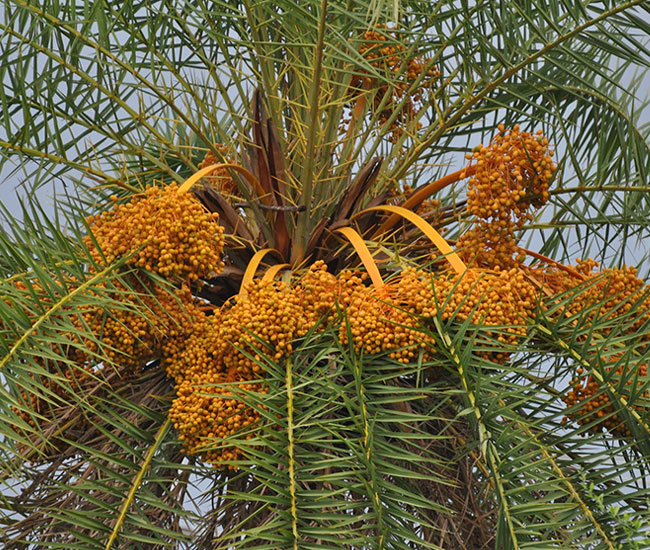
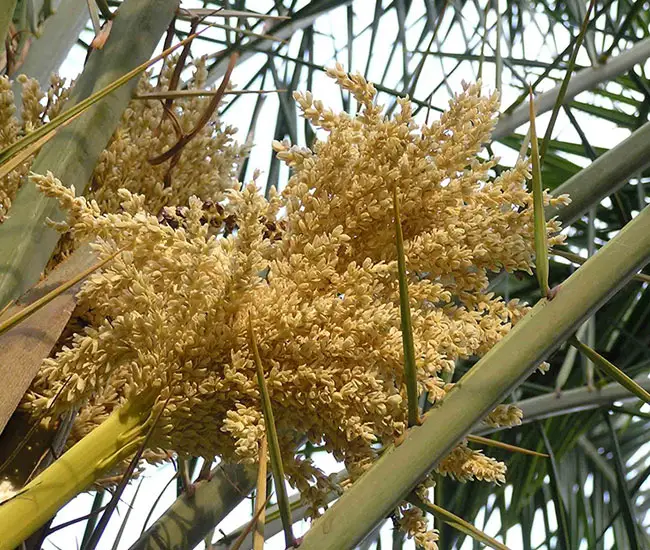
The Sylvester Date Palm produces small white flowers supported by 2-3-foot-long branching inflorescences that emerge from among the leaves. This palm is dioecious, with male and female flowers borne on separate plants.
Following the flowering phase, oval fruits, about 1 inch in diameter, develop, turning purple-black when ripe. These fruits are edible and offer a sweet taste, containing a single seed inside.
Caring for the Sylvester Date Palm
Phoenix sylvestris is a slow-growing palm that can reach heights of up to 40 feet and a width of 10-15 feet. It is known for its cold hardiness, withstanding temperatures as low as 15°F. It thrives best in USDA Zones 8b (15 to 20°F) to 11 (above 40°F).
The Sylvester Date Palm can tolerate short periods of drought and flourishes in full sun, provided it has well-drained but moist soil. Regular trimming is essential to prevent the accumulation of old dead leaves forming a “skirt.”
To ensure adequate nutrition, it’s recommended to apply high-quality palm fertilizer with a continuous-release formula twice a year during the growing season.
Propagation of the Sylvester Date Palm is typically accomplished through seeds, offering a straightforward method for cultivating this remarkable palm.
Sylvester Date Palm Tree Pictures
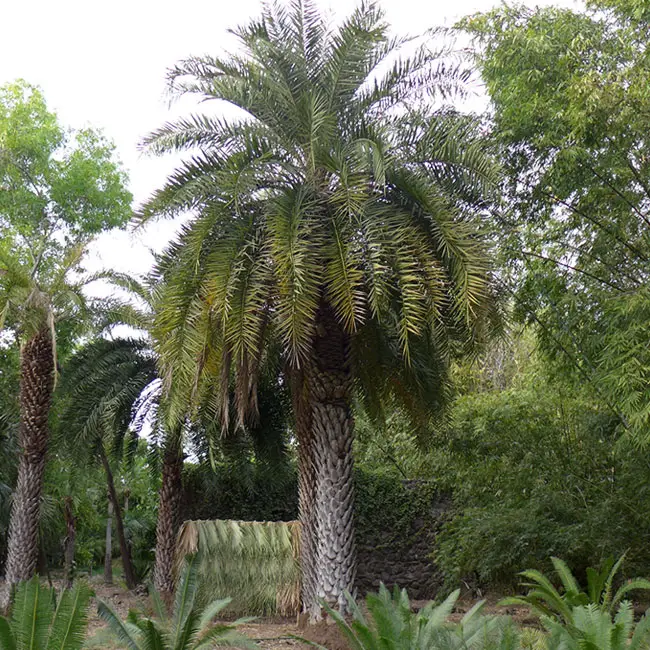
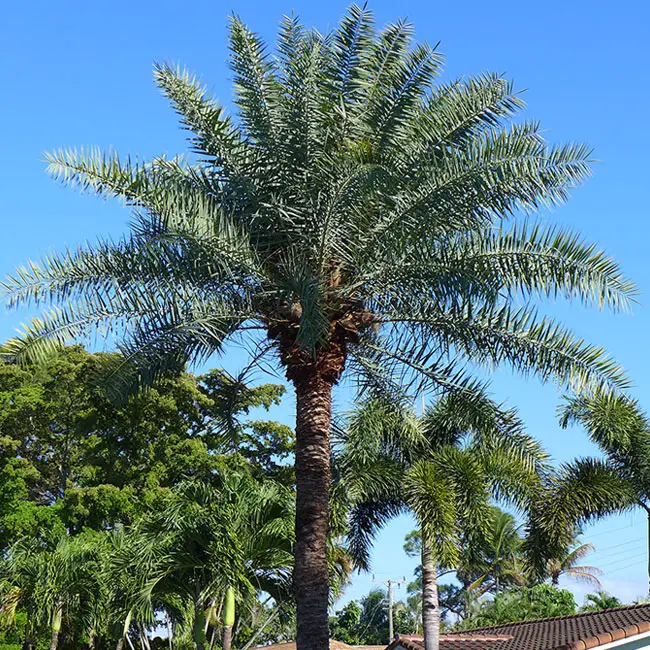
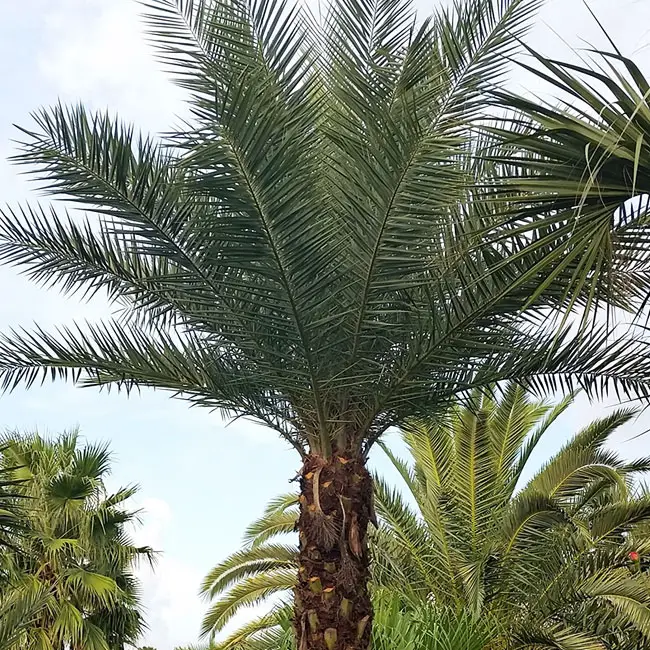
More information can be found on EDIS site.

What size is your medium Sylvester Date Palm? Where does it ship from?
my large Sylvester palms have new growth out the top which turns brown. they were set out 2 months ago. I soak them 2 times each week. They are in well drained sandy soil in central Florida. Do you have suggestion why new growth turns brown ?
Looking to buy some sylvester date palm . Can i have pricing on them pleasr
Will the sylvester fruit all year round in SW Florida or only in the spring?
After living in Melbourne Fl for over Forty years, this palm information site is the best I have found on the net. Thank you for the great photos and data you have provided. Your info about palm growing outside Florida is perfect for my son who lives in Gulfport Mississippi. The book you recommend is on the way to him and me. Thanks for a great site and if I can support you in any way, please contact me.
I have two Sylvester Palms and both are dying from ground up. . Both are fertilized twice yeary and watered (3) times weekly.
Your suggestions appreciated.
What fertilizer do recommend and how often